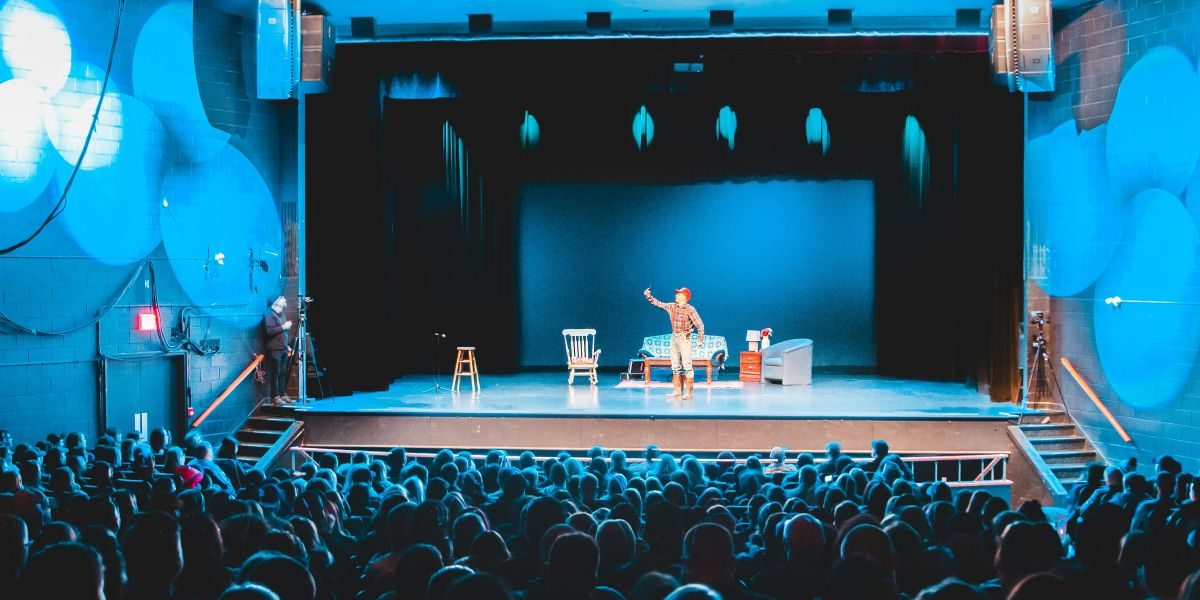New York City’s vibrant theater scene is shaped by two major forces: Broadway and Off-Broadway. While both are celebrated and influential, they differ in scale, approach, and audience experience. As observed by James Simon, Broadway is known for its large productions, commercial appeal, and global reputation, while Off-Broadway fosters more intimate and experimental storytelling. These differences influence how shows are produced, experienced, and remembered. Many iconic works have originated Off-Broadway before making the transition to Broadway, evolving to meet larger audiences while often retaining their creative roots. Together, they create a symbiotic ecosystem that drives innovation while also preserving tradition. Whether in a lavish Times Square theater or a tucked-away space in the West Village, New York theater offers something for a variety of audiences, contributing to the cultural landscape both locally and globally.
What Sets Broadway and Off-Broadway Apart
Broadway and Off-Broadway are both central to New York City’s theater world, but they differ in more than just size. Broadway theaters typically seat 500 or more people and are often located in the Theater District, while Off-Broadway venues seat between 100 and 499 people and are scattered throughout Manhattan. These distinctions affect contracts, budgets, and how productions are developed and marketed.
Off-Broadway is sometimes seen as a lower tier, but many respected works have premiered there. It is a space where emerging talent and bold ideas often gain early traction. Historically, both platforms evolved alongside each other, shaping how American theater is produced and consumed today. Some productions even alternate between the two, blurring the lines over time.
Production Styles and Storytelling Approaches
Broadway productions typically feature large ensembles, elaborate sets, and high production values designed to appeal to a wide audience. These shows often rely on proven formulas, recognizable titles, or adaptations of popular media to ensure commercial success. Musicals like The Lion King and Wicked focus on spectacle and scale, filling massive auditoriums with visual and emotional energy. The technical demands are considerable, often requiring months of preparation and specialized crews.
In contrast, Off-Broadway productions tend to operate on smaller budgets, which often results in more intimate storytelling and creative staging. Without the pressure of filling a 1,000-seat theater, directors and writers are more likely to explore unconventional narratives or minimalist designs. Storytelling in Off-Broadway shows tends to be more character-driven, often focusing on personal or socially complex themes that might not reach mainstream stages. This creative freedom is one reason many artists choose to develop some of their most daring work in these spaces.
Where Creative Risks Take Shape
Off-Broadway has long been a space where bold artistic experiments are not only welcomed but encouraged. Without the same commercial pressures, playwrights and directors have the opportunity to test new formats, voices, and stories. Productions like Rent and Fun Home both started in smaller venues, allowing them to develop organically before finding broader acclaim. These early runs often serve as testing grounds for audience response and narrative refinement.
Broadway’s high ticket prices and substantial investment costs often deter producers from taking significant artistic risks. The goal is often to appeal to tourists and general audiences, which can result in safer programming. However, when a show that started Off-Broadway makes it to Broadway and retains its original spirit, it can become a cultural landmark. Hamilton’s journey from a small theater at The Public to a global phenomenon is a notable example of a rare crossover. Its success demonstrated that taking creative risks can indeed pay off on the largest stage.
Audience Experience and Venue Impact
The size and layout of a theater play a major role in shaping how an audience engages with the production. Broadway houses, with their larger seating capacities, create a grand, almost cinematic atmosphere. The experience often feels polished and larger-than-life, with booming orchestras and dazzling visuals that fill the entire space. The scale of the venue can amplify emotional moments in ways that resonate differently than in smaller venues.
Off-Broadway venues, on the other hand, offer a more intimate setting, bringing actors and the audience closer together. This proximity allows for more subtle performances and emotional immediacy that can sometimes be lost in larger theaters. In spaces like the Cherry Lane or Signature Theatre, even a whispered line can have a significant impact. This closeness fosters a stronger connection between the story and the audience, and the physical limitations of Off-Broadway stages often inspire creative solutions that become part of the show’s identity.
Ticket pricing also affects accessibility. Broadway shows are often more expensive, which can make them less accessible to some theatergoers. Off-Broadway provides a more affordable alternative to experience innovative and powerful work, often attracting dedicated fans and adventurous audiences. These pricing differences also influence the demographics of each audience, contributing to varying responses and levels of engagement.
Movement Between Off-Broadway and Broadway
Many iconic productions began in Off-Broadway venues before gaining the attention needed to make the leap to Broadway. As shows transition, they often undergo changes in staging, casting, and promotional strategies to meet the demands of a larger venue and broader audience. This process is often strategic, requiring careful consideration of scale and marketability.
A successful transfer isn’t just about scaling up—it often involves refining the storytelling to retain its emotional depth while reaching a wider audience. Fun Home began in a modest space and later moved to Circle in the Square, adapting while maintaining its raw, personal voice. These transitions highlight how innovative work can grow without losing its essence. Some productions even return to Off-Broadway or tour smaller markets, demonstrating their versatility and continued relevance.
Contribution to Theater Culture
Broadway and Off-Broadway contribute to the cultural conversation in distinct yet complementary ways. Broadway draws international attention, fuels tourism, and often sets the commercial tone for theater globally. Its influence extends beyond the stage, appearing in film, television, and global touring productions. The branding power of a successful Broadway run can extend a show’s life well beyond its original production.
Off-Broadway plays a critical role in nurturing new voices and pushing creative boundaries. Many artists who later become prominent on Broadway honed their craft in Off-Broadway spaces. It’s not just a stepping stone—it’s a creative force that continues to shape and evolve the art form. Together, Broadway and Off-Broadway form a dynamic ecosystem that drives innovation while maintaining the integrity of performance art.

















